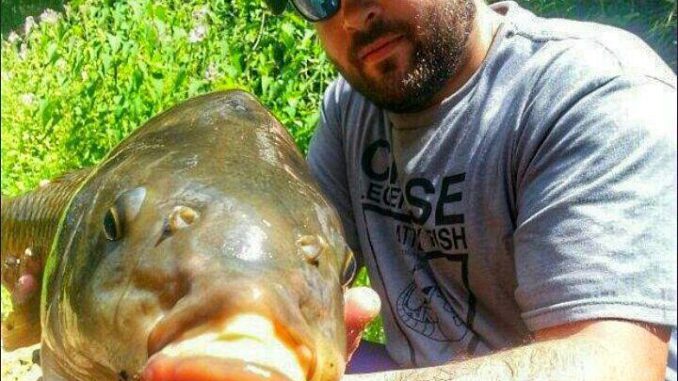
Overlooked species is a blast from a kayak
As I approached the boat ramp, I noticed the small lagoon to the left. The water was shallow, and the bright sun penetrated the surface, allowing all things below to be seen easily, even from across a pine-filled peninsula.
One tree had fallen, creating one of the few shadows across the water. While waiting my turn at the ramp, I heard a splash and turned toward the lagoon. I saw two other swells created by something much larger than a panfish or a turtle bobbing underwater.
Due to the water clarity, I could make out the distinct shapes of three fish below the surface. Each seemed to be at least 3 feet long, which would rule out largemouth bass and leave two possibilities: carp or catfish. And carp was the species I was targeting.
Carp are not as sought-after in the United States, but they are a prime fighter on the end of a fishing line. The rest of the world loves to fish for what we call a trash fish. Think of carp as the fishing world’s version of soccer here in the United States.
Many of our lakes and reservoirs harbor carp. Unlike those along the Mississippi River and its tributaries, our carp are not as invasive. Most bodies of water that maintain a balance of carp do so with carp that have been introduced as sterile in order to keep the fish from multiplying out of control.
While they are popular to hunt with bowfishing gear, some of these waters have made it illegal to do so because of the cost of introduction. Hook and line remains a legal way to pursue the fish, and if you get a hookup with a carp while on a kayak or canoe, be ready.
You can sight-fish for carp in areas of shallow water where hydrilla dominates. They can be spooked easily, and that makes a kayak or canoe ideal to stalk one for a cast.
Carp feed on vegetation and, sometimes, worms and insect larvae; anything with a mealy texture can attract them. A particular useful way of chumming involves canned corn. Once the feeding frenzy has started, you can just about catch them on anything cast in the area of the corn.
Dough balls are another useful bait to attract carp. Panfish such as bluegill, redbreast and others we call bream also love doughballs, so you may need to know your bites.
Everyone is used to how a bream takes a bait. With the carp, allow it to take the bait for several seconds without setting the hook. The carp will nibble to begin with, and an early hookset may pull the bait away. Once you are sure the carp has taken the hook, give it a hard jerk and be ready. When a “small” 20-pound carp is hooked, the fight is fierce.
Fly rods are another way to fish for carp. Anything that resembles a worm or larvae with some wiggle to it can attract the carp. It is not necessary to use large baits, as the carp’s mouth is small compared to other fish that are half the size of the golden rough fish.
If the carp is spooked, sit still for 15 minutes or so and stay on the lookout; the carp will come back to the area. You can also fish for carp at night by using a standard head lamp for sighting and casting. It is advisable to use a light that can be dimmed after spotting the carp in order to avoid spooking the fish.


